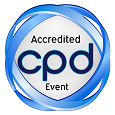
Jurgen Gailer
University of Calgary, Canada
Title: Probing toxicologically relevant interactions of inorganic pollutants in the bloodstream
Biography
Biography: Jurgen Gailer
Abstract
Numerous bio-monitoring studies have revealed that various human populations including children are exposed to environmentally abundant non-essential metals/metalloid species (e.g. cadmium, lead, mercury and arsenic). It is unclear; however, if the chronic low level exposure of humans to certain non-essential metals/metalloid species may be linked to the etiology of human diseases. Since health care costs that are related to chronic human diseases are increasing, the establishment of functional connections between the exposure to non-essential metals/metalloid species and human diseases is viewed by many as one of the greatest challenges in the post-genomic era. Uncovering the underlying biochemical mechanisms, however, represents a truly monumental task. Conceptually, this quest requires fundamental advances in two particular areas, namely a better understanding of the biochemical fate of non-essential metals/metalloid species in the bloodstream and within toxicological target organs. Our general lack of understanding toxicologically relevant interactions of non-essential metals/metalloid species in the bloodstream must be attributed to its inherent complexity on the one hand and a general lack of appropriate instrumental analytical methodologies on the other. To this end, we develop and apply new analytical methods to probe toxicologically critical interactions between non-essential metal/metalloid species and blood constituents based on liquid chromatography. After a brief overview of the instrumental analytical methods that we have developed to probe these interactions either in a ‘bottom-up’ or a ‘top-down’ manner, some recent results will be highlighted.

